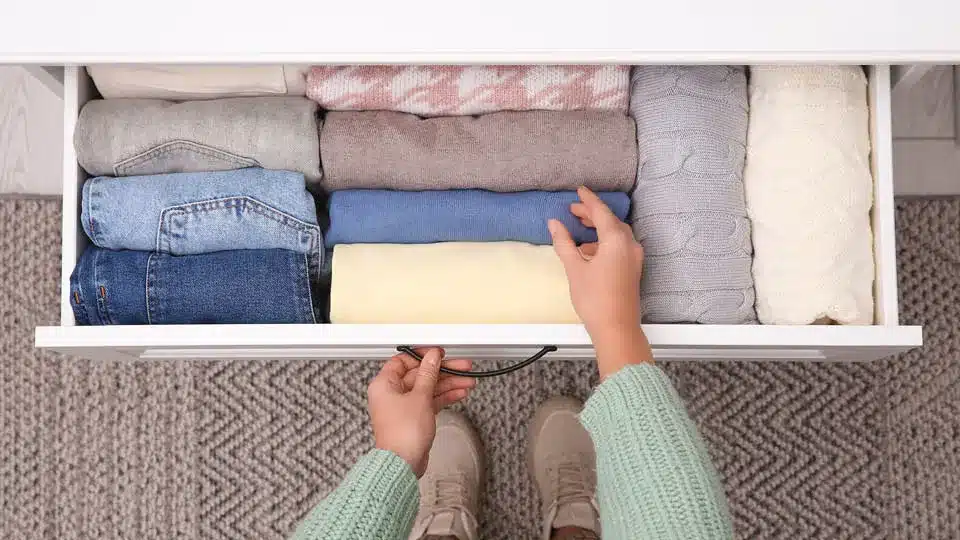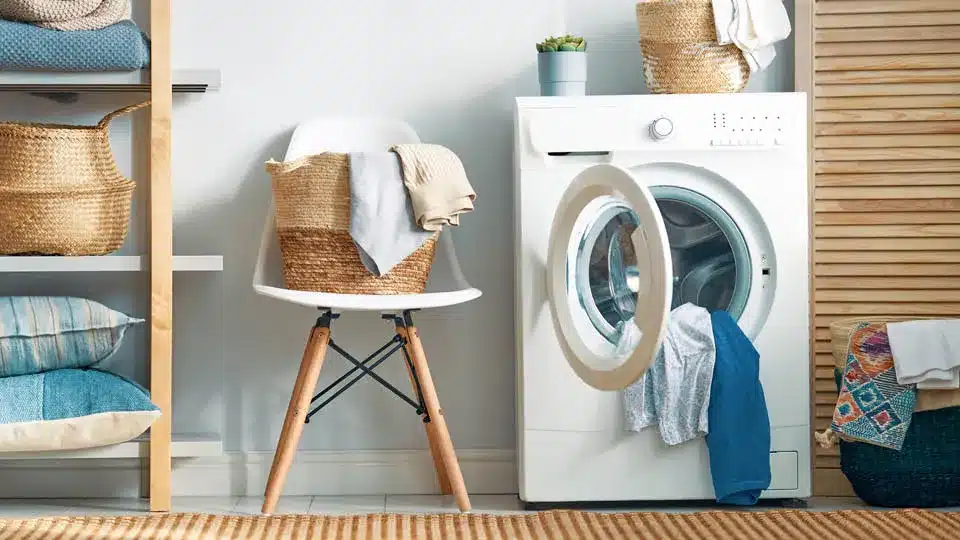Clothing Storage Made Simple with a Little Wardrobe Wisdom

Decluttering your closet? Packing away seasonal garments? Working on a choice collection of vintage clothes? No matter your motives, proper storage techniques can make all the difference in maintaining the quality of your items while they’re tucked away. From washing and separating fabrics to controlling moisture and pests, Mini Mall Storage has expert tips to ensure your wardrobe stays fresh and ready for wear. Let’s get into it.

Preparing your clothes for storage
Preparation is an important step in keeping your stuff in top shape for the long term. Let’s look at a few tips to help you get your clothes ready.
Wash and dry—Give everything a quick wash and dry thoroughly to keep your clothes in the best possible shape, and to keep odors and pests at bay.
Separate by fabric type—Sorting your clothes by fabric type will help you determine the storage methods and containers that work best and help you keep unlike fabrics from damaging each other (think wool vs. silk).
Inventory and labelling—Certain fabrics need more attention than others, so it can be helpful to keep an inventory or use a labelling system so you can quickly find your more high-maintenance pieces like leather or fur.
What to hang, what to fold—Big chunky sweaters, synthetic fabrics, and pants are best stored folded neatly into a storage box or plastic container. Consider investing in clothing racks or wardrobe boxes to store them hanging up for delicate items like dresses, suits, and formal wear. Our 24″ x 20″ x 46″ wardrobe box includes a clothes bar to make it easy to take these items out of your closet and transfer them into the box.
Check out our post, “Top Tips for Long-Term Clothes Storage with Mini Mall,” for a detailed breakdown of how to choose the right storage containers.

Getting creative with in-home storage options
Now that you’re washed and sorted, let’s look at some sneaky ways to store more clothing around the house.
Under-the-bed storage—This is one of our favorite storage hacks—use the wasted space under your bed. Clear out all the dust bunnies, pick up some under-the-bed storage containers, and you’ll have the perfect hideaway for your seasonal extras.
Use wasted floor space—Have a weirdly spacious wall behind a door, in the hallway, beside the front entrance, or some other random spot in the house? Cubby storage can be a great way to use that space and keep everything hidden, organized, and within reach.
Look up—Don’t limit yourself to floor space. Look for empty spaces on the walls that you might be able to convert into functional storage. Wall-mounted coat hooks can help you store purses, scarves, and other accessories, and shelves can give you added room to stash decorative bins or baskets full of items that aren’t in use.

Maintaining the right conditions
No matter how and where you choose to store extra clothes, if the conditions aren’t just right, you’ll run into problems down the road.
Moisture & temperature control
If you live in an area where humidity is a concern, place desiccant packets or moisture-absorbing products in your storage containers to help control humidity levels and prevent moisture-related damage. Climate-controlled storage also shields against the fluctuations in temperature and humidity so your clothes will be safe for the long haul.
Pest control
Use lavender sachets, cedar balls, or mothballs to deter pests like moths and silverfish from damaging your clothing. Some people don’t like the smell of mothballs, so cedar chips are a good alternative—they absorb moisture and keep clothes dry and mildew-free while also serving as a natural deterrent against creepy crawlies.
Rotate often
Certain fabrics, like furs and leathers, can lose their shape if stored for too long in the same position, so you may need to periodically come in and rotate items to ensure even exposure to air and minimize the risk of prolonged pressure on specific garments.
Avoid Direct Contact with Floors
If they’re stored in cardboard boxes, you’ll want to keep clothing items off the floor by using shelving units and pallets or stacking clothing boxes on top of other items. This is because concrete is porous, and cardboard is highly absorbent, so you need to create a buffer to prevent the moisture from getting to your clothes.
From moisture control to proper labeling, each step plays a crucial role in preserving the longevity of your wardrobe. So, say goodbye to wrinkles, odors, and pests, and hello to a well-organized and well-preserved closet with these top-notch storage strategies. And if you don’t have enough space at home, Mini Mall Storage will be there to save the day. Visit us today to find a unit near you!